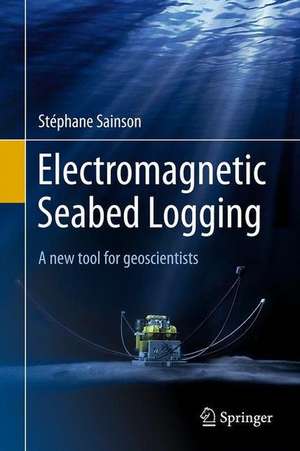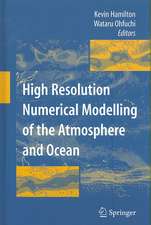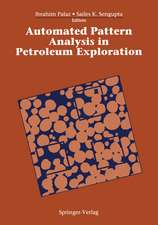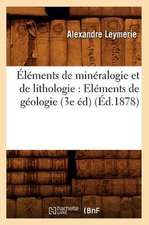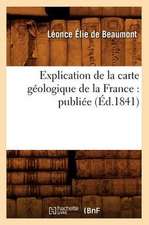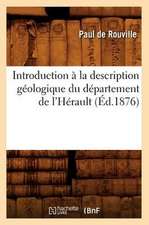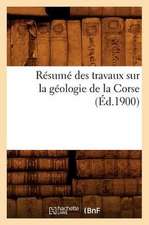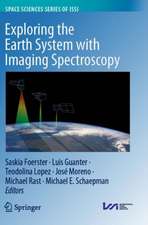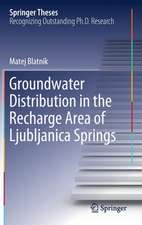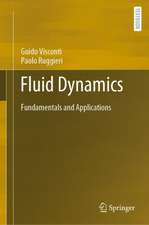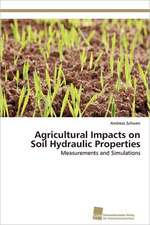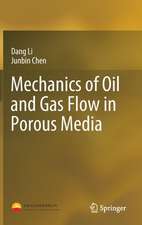Electromagnetic Seabed Logging: A new tool for geoscientists
Autor Stéphane Sainsonen Limba Engleză Hardback – 10 apr 2017
Appeared in 2000, these techniques, with more than 500 industrial jobs, present after 15 years of commercial success a discovery record rate of nearly 90 % and seem now to turn the world in the offshore exploration field.
Proposing a serious index of the presence of hydrocarbons , electromagnetic SBL coupled with seismic reflection survey is probably the first reliable method for direct detection of hydrocarbons. Complementing the structural concepts of oil exploration used since the 1920s, the SBL now radically modifies the approach and the philosophies of exploration especially those then including drilling and well logging activities.
Electromagnetic Seabed Logging: a new tool for oil and gas prospecting, which original publication in French was in 2012, presents these methods, its principles, advantages, limitations, instruments, modeling and applications.
It is also designed to be a tool for a reflection on the use of electromagnetic energy for the exploration in a conductive medium as sea water thus setting the theoretical and practical limits of these investigations for future developments.
This book is intended of course for the geophysicists and the petroleum geologists, but also for the earth scientists, the reservoir engineers and the log analysts
| Toate formatele și edițiile | Preț | Express |
|---|---|---|
| Paperback (1) | 955.38 lei 38-44 zile | |
| Springer International Publishing – 17 iul 2018 | 955.38 lei 38-44 zile | |
| Hardback (1) | 1081.74 lei 38-44 zile | |
| Springer International Publishing – 10 apr 2017 | 1081.74 lei 38-44 zile |
Preț: 1081.74 lei
Preț vechi: 1423.35 lei
-24% Nou
Puncte Express: 1623
Preț estimativ în valută:
207.01€ • 224.79$ • 173.89£
207.01€ • 224.79$ • 173.89£
Carte tipărită la comandă
Livrare economică 18-24 aprilie
Preluare comenzi: 021 569.72.76
Specificații
ISBN-13: 9783319453538
ISBN-10: 331945353X
Pagini: 540
Ilustrații: XIX, 536 p. 271 illus., 38 illus. in color.
Dimensiuni: 155 x 235 x 34 mm
Greutate: 1.18 kg
Ediția:1st ed. 2017
Editura: Springer International Publishing
Colecția Springer
Locul publicării:Cham, Switzerland
ISBN-10: 331945353X
Pagini: 540
Ilustrații: XIX, 536 p. 271 illus., 38 illus. in color.
Dimensiuni: 155 x 235 x 34 mm
Greutate: 1.18 kg
Ediția:1st ed. 2017
Editura: Springer International Publishing
Colecția Springer
Locul publicării:Cham, Switzerland
Cuprins
Introduction.- Preamble.- Economic environment.- Elements of geology and oil exploration.- Electrical resistivity and geology.- The electromagnetic seabed logging (SBL): its place in the modern petroleum exploration.- Historic landmarks on the sea bottom SBL.-
SBL methods philosophies and interests.- SBL industry and environmental impact.- Overview of the book.- Principles and methods.- Introduction.- Physical laws and principles.- Different methods and associated devices.- Operational limitations: detection problems.- Advantages and disadvantages compared to the seismic investigations.- Hybrid and combined methods.- Conclusion and synthesis.- Metrology and sea environment.- Introduction.- Electromagnetic properties of propagation media.- Frequential and temporal aspects of the method.- Theoretical evaluation and measurement of EM fields.- Acquisition systems definition and operational procedures.- Conclusion.- Instrumentation and equipment.- Introduction.- Measuring instruments qualities.- History of measuring equipments.- The transmitter.- The receivers.- Operational capabilities.- Conclusion.- Interpretation and modeling.- Introduction.- Reminders and general methods of interpretation.- Analytical models.- Numerical models.- Inversion techniques.-Analog models.- Conclusion.- Geological applications.- Introduction.- North Atlantic: Ramesses III (oceanic ridge).- West Africa: Angola basin (oil).- North Sea: Troll field (gas).- North Sea: Frigg field (gas pipelines).- Barents Sea: basin Nordkapp (diapir).- Malaysian gisement monitoring.- Example of DC prospecting.- Conclusion.- Overall conclusion and perspectives.
SBL methods philosophies and interests.- SBL industry and environmental impact.- Overview of the book.- Principles and methods.- Introduction.- Physical laws and principles.- Different methods and associated devices.- Operational limitations: detection problems.- Advantages and disadvantages compared to the seismic investigations.- Hybrid and combined methods.- Conclusion and synthesis.- Metrology and sea environment.- Introduction.- Electromagnetic properties of propagation media.- Frequential and temporal aspects of the method.- Theoretical evaluation and measurement of EM fields.- Acquisition systems definition and operational procedures.- Conclusion.- Instrumentation and equipment.- Introduction.- Measuring instruments qualities.- History of measuring equipments.- The transmitter.- The receivers.- Operational capabilities.- Conclusion.- Interpretation and modeling.- Introduction.- Reminders and general methods of interpretation.- Analytical models.- Numerical models.- Inversion techniques.-Analog models.- Conclusion.- Geological applications.- Introduction.- North Atlantic: Ramesses III (oceanic ridge).- West Africa: Angola basin (oil).- North Sea: Troll field (gas).- North Sea: Frigg field (gas pipelines).- Barents Sea: basin Nordkapp (diapir).- Malaysian gisement monitoring.- Example of DC prospecting.- Conclusion.- Overall conclusion and perspectives.
Recenzii
“The book provides a good overview of marine EM methods and their application for those starting out in the subject or wanting to learn more about the principles and practice. For specialists or those who want to dig further into the ideas that are discussed, there is an extensive bibliography, which is in itself extremely useful.” (Lucy MacGregor, The Leading Edge, October, 2017)
Notă biografică
Stéphane Sainson obtained his Ph.D. degree in geophysics in 1984 (Applied Geophysics Laboratory of the Ecole Normale Supérieure de Paris). After working several years as a diver and as a prospector, Dr. Sainson subsequently held the positions of research engineer in wireline logging, project leader in borehole seismic (Schlumberger) and finally R & D manager for special offshore operations on pipelines (Challenger of Vinci group). S. Sainson exercises his independent consulting engineering profession since 1997.
Textul de pe ultima copertă
Seabed logging (SBL) gathers the electromagnetic methods of marine subsoil exploration and more specifically those dedicated to the exploration of oil and gas at sea.
Appeared in 2000, these techniques, with more than 500 industrial jobs, present after 15 years of commercial success a discovery record rate of nearly 90 % and seem now to turn the world in the offshore exploration field.
Proposing a serious index of the presence of hydrocarbons , electromagnetic SBL coupled with seismic reflection survey is probably the first reliable method for direct detection of hydrocarbons. Complementing the structural concepts of oil exploration used since the 1920s, the SBL now radically modifies the approach and the philosophies of exploration especially those then including drilling and well logging activities.
Electromagnetic Seabed Logging: a new tool for oil and gas prospecting, which original publication in French was in 2012, presents these methods, its principles, advantages, limitations, instruments, modeling and applications.
It is also designed to be a tool for a reflection on the use of electromagnetic energy for the exploration in a conductive medium as sea water thus setting the theoretical and practical limits of these investigations for future developments.
This book is intended of course for the geophysicists and the petroleum geologists, but also for the earth scientists, the reservoir engineers and the log analysts.
Appeared in 2000, these techniques, with more than 500 industrial jobs, present after 15 years of commercial success a discovery record rate of nearly 90 % and seem now to turn the world in the offshore exploration field.
Proposing a serious index of the presence of hydrocarbons , electromagnetic SBL coupled with seismic reflection survey is probably the first reliable method for direct detection of hydrocarbons. Complementing the structural concepts of oil exploration used since the 1920s, the SBL now radically modifies the approach and the philosophies of exploration especially those then including drilling and well logging activities.
Electromagnetic Seabed Logging: a new tool for oil and gas prospecting, which original publication in French was in 2012, presents these methods, its principles, advantages, limitations, instruments, modeling and applications.
It is also designed to be a tool for a reflection on the use of electromagnetic energy for the exploration in a conductive medium as sea water thus setting the theoretical and practical limits of these investigations for future developments.
This book is intended of course for the geophysicists and the petroleum geologists, but also for the earth scientists, the reservoir engineers and the log analysts.
Caracteristici
First and unique book on electromagnetic seabed logging
Gather all the concepts, techniques and methods used in electromagnetic offshore prospecting
Proposes an easy access to mathematical models of software interpretation
Discusses still controversial specific points
Gives examples of different real geological and accurate operations at sea
Gather all the concepts, techniques and methods used in electromagnetic offshore prospecting
Proposes an easy access to mathematical models of software interpretation
Discusses still controversial specific points
Gives examples of different real geological and accurate operations at sea
